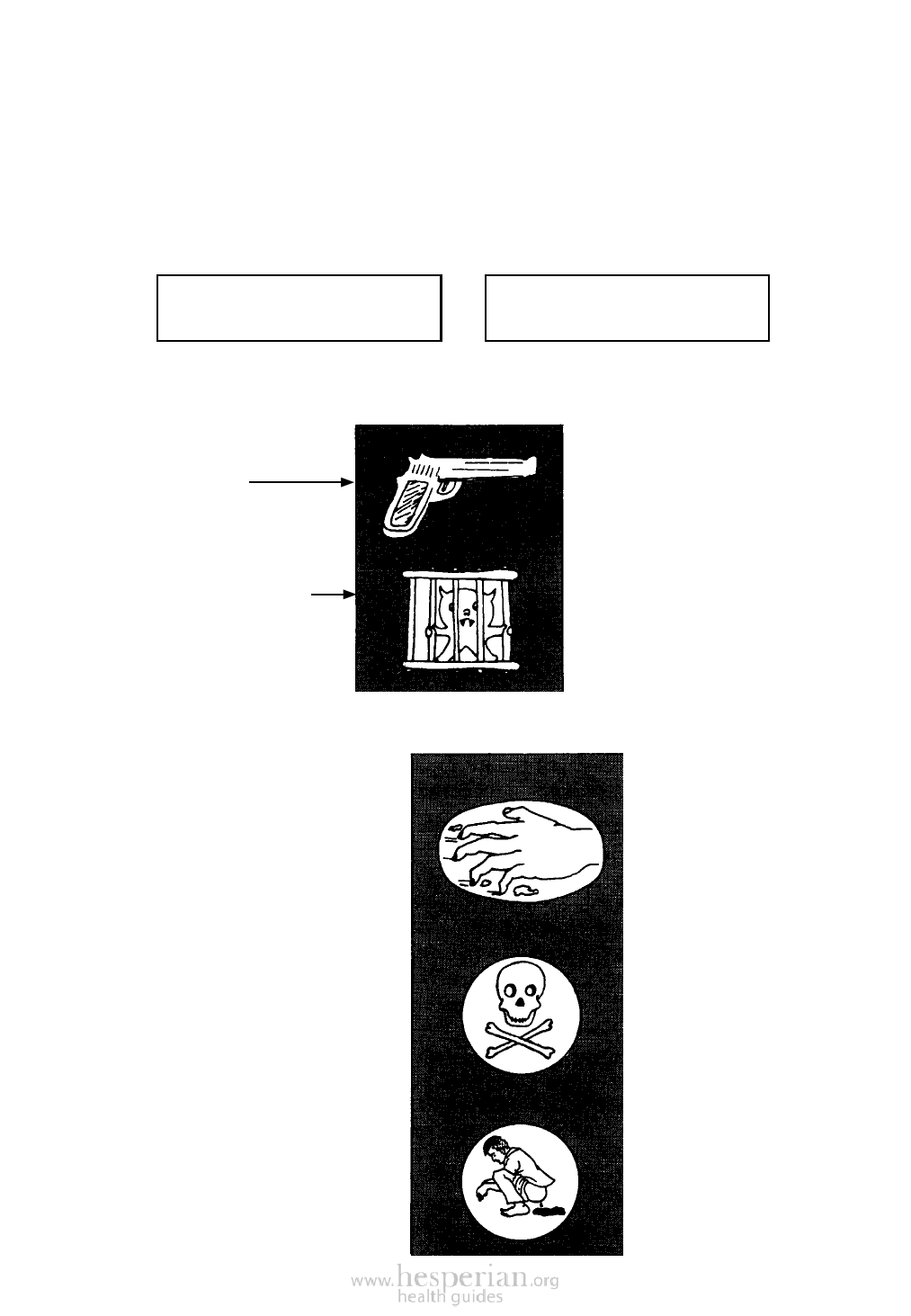
19-3
Beneficial effects
Different antibiotics fight infections in different ways:
1. Some antibiotics attack relatively few kinds of bacteria. Others attack many
different kinds. So, as a start, students learn to divide commonly used
antibiotics into 2 groups, which they list on the flannel-board under cut-out
signs like these:
ANTIBIOTICS THAT ATTACK
FEW KINDS OF BACTERIA:
ANTIBIOTICS THAT ATTACK
MANY KINDS OF BACTERIA:
(NARROW-RANGE ANTIBIOTICS)
(BROAD-RANGE ANTIBIOTICS)
2. Also, some antibiotics are ‘stronger’ than others:
Some antibiotics
kill bacteria.
Other antibiotics
only capture them
or slow them down.
Harmful effects
Students can use
cutout figures like
these to represent
antibiotics that kill
bacteria
and
antibiotics that only
capture them. Color
the pistol black and
the cage white (or
yellow).
Possible harmful effects also differ with different antibiotics:
3. Some antibiotics cause
allergic reactions in certain
persons. Reaction does not
depend on the amount of
medicine taken, but on
whether the person is
allergic. (See WTND, p. 350)
4. Some antibiotics cause
poisoning or ‘toxic’
reactions—especially
if more than the
recommended amount is
used. (See WTND, p. 58, 356,
and 358.)
5. Broad-range antibiotics
sometimes cause diarrhea,
‘thrush’, and other problems.
This is because they attack
‘good’ bacteria along with the
bad. (See WTND, p. 58.)
A scratching hand
represents allergic
reactions because
itching is the most
common sign.
A skull represents a
poisonous reaction.
Different sizes of
skulls can be used
to show greater or
lesser danger.
A person with
diarrhea represents
problems that
result from
attacking good
bacteria as well
as bad.